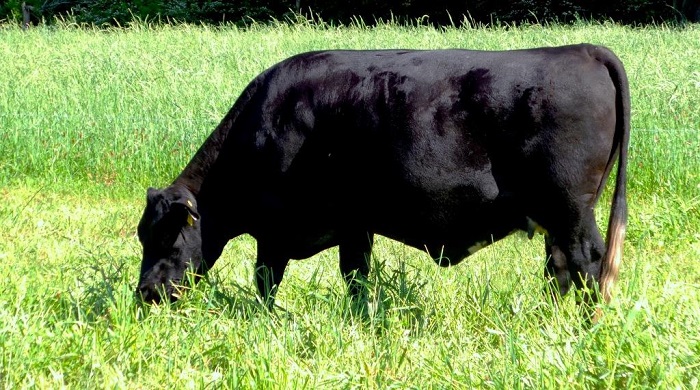
Photo Credit: Mark Mauldin
It is widely recognized that cool season annuals, like ryegrass, are the highest quality forages we produce here in NW Florida. Even though we often refer to these forages as “winter grazing” they are actually the most productive during the spring. That was certainly the case this year. The normal day length and temperature increase during March and April plus adequate rainfall created excellent growing conditions. Forages, especially the later maturing ryegrass varieties, performed very well this spring. This excellent forage growth put some producers in a rare but welcome situation – too much grass.
I know, I know, there is no such thing as too much grass but when forage production is out pacing the herd’s ability to consume it there are some management decisions to be made. Producers had to decide how they would best utilize the excess forage. A popular decision was to conserve the forage as hay or haylage (baleage or round bale silage). This resulted in a lot of producers “getting in the hay business” earlier in the year then many of them had planned on.
What happened?
I’m not saying this was the case for every operation but my general observations went something like this; by the time many producers realized they would have enough forage to warrant making hay or haylage and actually got a cutter in the field, the ryegrass had already seeded out and began to senesce.
When a forage plant reaches maturity, sets seeds, and begins to decline, it is well past its optimum period to harvest and conserve; the forage quality has been significantly diminished compared to what it would have been when the plant was in the vegetative state. The optimum time to harvest ryegrass for hay is during the boot to early head stage; this provides the best balance between quantity and quality of forage. The maturity, condition, and therefore, quality of some of the ryegrass and other small grains that were rolled for hay or haylage will likely be much lower than what is normally associated with these forages.

Photo Credit: Mark Mauldin
Although weather patterns this spring allowed for excellent growth, they also caused rapid decline of cool season forage quality. There was a high incidence of sterile heads on small grains and ryegrass this spring. This was likely caused by large rain events during the pollination period. Pollen was effectively washed away, preventing pollination and resulting in a sterile seedhead. Sterile plants tend to “quit” and senesce fairly rapidly. Additionally, the hot dry spell that began in late April did a lot to rapidly finish off plants that were already close to the end of their annual cycle. The FAWN station in Marianna recorded only 0.66 inches of rain from April 26, 2015 through May 19, 2015 with an average high temperature of 84.2 degrees F.
If you put up some “less than great” hay or haylage it’s not the end of the world but it is something that you need to acknowledge and manage appropriately. First, have a forage analysis performed. Once you know the quality of the forage then you can address the situation. If the quality turns out to be poor you have some options. Supplementation may not be required if you feed it to animals with lower nutritional demands. If you are going to feed it to growing and/or lactating animals supplementation will likely be required. Don’t assume that it is good hay just because it’s ryegrass. Get it tested so you know what you’ve got, don’t let a decline in cattle performance be how you determine that your hay wasn’t very good. For more information about how to sample conserved forages or where to send them for analysis contact your county’s UF/IFAS AgriculturalAgent.
 0
0
